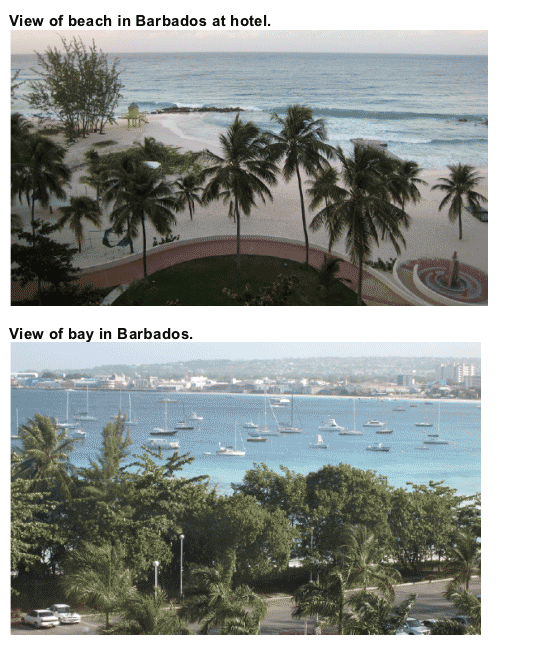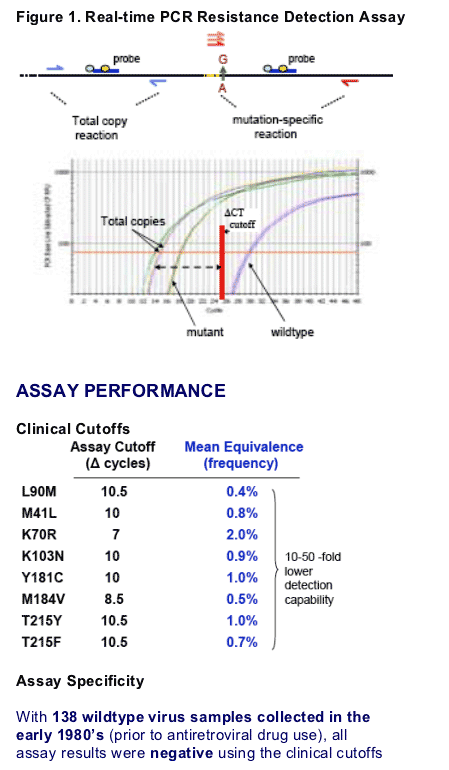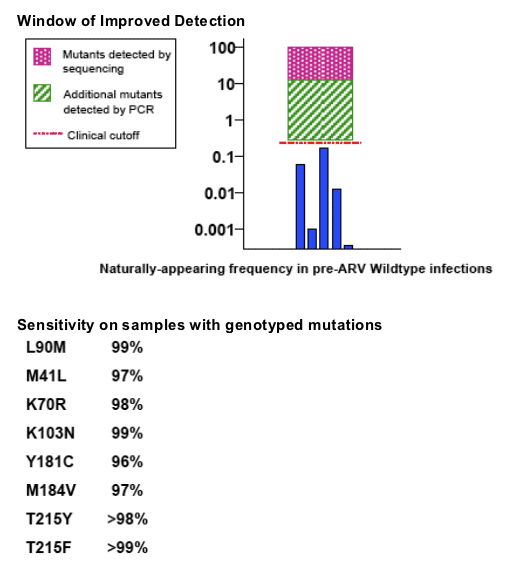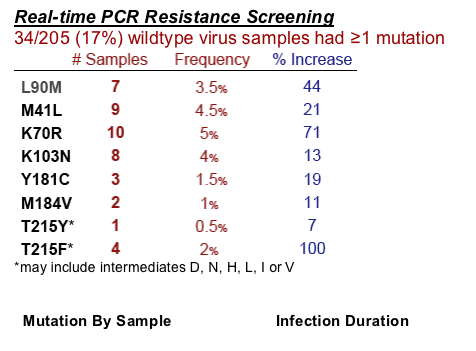 |
 |
 |
| |
Sensitive Testing Demonstrates a High Prevalence of Transmitted Drug
Resistance among Conventionally Genotyped Wildtype HIV-1 Infections
|
| |
| |
Reported by Jules Levin
16th Intl HIV Drug Resistance Workshop, June 12-16, 2007, Barbados

Jeffrey A. Johnson*, Jin-Fen Li, Xierong Wei, Jonathan Lipscomb, Amanda Smith, and Walid Heneine
Division of HIV/AIDS Prevention, Centers for Disease Control and Prevention, Atlanta, GA, USA
AUTHOR CONCLUSIONS
The findings revealed previously-undetected mutations, including multi-drug resistance, in drug-na´ve persons documented to have wildtype virus infections
The prevalence of low-frequency mutations and their equal occurrence in chronic infections suggests a substantial proportion of transmitted drug-resistance decays and persists at low levels
These findings confirm that conventional bulk sequencing underestimates transmitted drug resistance and underscores the importance of sensitive drug resistance testing
AUTHOR SUMMARY
Real-time PCR screening for HIV-1 subtype B drug resistance mutations identified previously undetected mutant viruses at frequencies within the cutoff
established for clinical samples
The finding of drug resistance mutations in this U.S. wildtype virus population increased transmitted resistance in this cohort by 66% (from 20% to 33%)
17% of wildtype virus samples had mutations associated with drug resistance- 2% had MDR mutations
Low-frequency dual-drug class mutations increased the prevalence of multi-drug resistance in this cohort by 50% (from 4% to 6%)
RESULTS
Sensitive PCR testing for 8 key resistance-associated mutations identified low-frequency variants in 34/205 (17%) persons diagnosed with wildtype infections
Each mutation tested had been identified in at least one sample
Thymidine analog mutations (TAMs) M41L and K70R were the most common low-frequency mutations, the T215Y TAM was the least common
The greatest increases in mutation prevalence for this cohort were with L90M, K70R and T215F, the latter mutation doubled in number
Sensitive testing identified four samples with dual-drug class resistance
Multi-drug resistance mutations were not linked
Mutations were evenly distributed between recently-infected persons 15/90 (17%) and persons with longer-duration infections 19/115 (17%)
INTRODUCTION
In the absence of antiretroviral treatment drug-resistant HIV decay over time
The majority of newly diagnosed HIV infections are chronic and are likely to have undergone substantial drug resistance decay
Conventional bulk sequence testing does not allow for the reliable detection of transmitted drug-resistant variants comprising less than 20% of a virus sample
Sensitive point-mutation assays can improve identification of resistance mutations by uncovering minority mutants persisting below bulk sequence
detection
Study Approach:
Use sensitive real-time PCR HIV drug resistance assays to evaluate for the presence of undetected drug resistance mutations in recently diagnosed drug-na´ve persons established to have wildtype virus infections
METHODS
Reverse Transcriptase-PCR
HIV genomic RNA was extracted (Qiagen UltraSens RNA kit) from patient plasma or serum. The templates for the nested real-time PCRs were generated by reverse transcriptase-PCR using primers that spanned from the beginning of protease to the middle of the RT sequence.
Real-time PCR
Baseline measurements for viral copies in test samples were determined using HIV RT total copy primers and probe (Fig. 1). The mutation-specific primers were designed to maximize specificity for annealing to the mutated nucleotide(s)(1-3). The probes (reporter) for each reaction were 5'-labeled with FAM and internally quenched. Degradation of the fluorescent probes during chain elongation generates the amplification signals. The cycle number where the fluorescence emission exceeds the threshold is the threshold cycle (CT) and is used for comparing amplification levels (_CT) between the total copy and mutation-specific reactions. All reactions were performed in duplicate using an iCycler (Bio-Rad) and AmpliTaq Gold (Applied Biosystems) with an annealing temperature of 50oC and extension at 60oC.
Mutation-specific sequencing
Select samples underwent mutation-specific amplicon sequencing to evaluate for the presence of associated low-frequency drug resistance mutations


STUDY QUESTION
Because conventional bulk sequencing has difficulty detecting variants at frequencies below 20%, can persons diagnosed with wildtype virus infections have undetected drug-resistant viruses?
Reassessment of Transmitted Resistance
Clinical Samples from Newly-diagnosed Persons
205 wildtype virus samples genotyped by conventional bulk sequencing- collected in the US (Los Angeles and Chicago) between 2003-2005
Study samples were from a cohort of 586 persons - 20% had genotyped drug resistance mutationsStudy samples were from a cohort of 586 persons - 20% had genotyped drug resistance mutations


REFERENCES
1. Hance AJ, et. al. J Virol 2001 Jul;75(14):6410-7.
2. Palmer S, et. al. Third HIV DRP Symposium: Antiviral Drug Resistance, Chantilly, VA (Dec 8-11, 2002)
3. Johnson JA, et. al. 12th CROI, Boston. MA (Feb 22-25, 2005)
|
| |
|
 |
 |
|
|